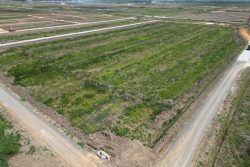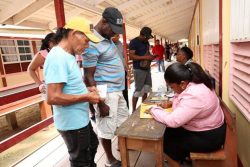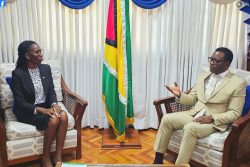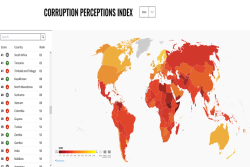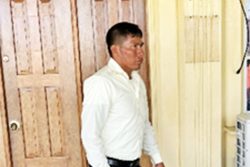One of the issues that arose out of what one media report quizzically described as a ‘playful incident’ that resulted in the death of an 11 year-old Strathspey Primary school pupil, Mark Harrypaul, would appear to have to do with whether or not our teachers are exposed to potentially life-saving protocols in the event that a child, for whatever reason,, encounters an unforeseen medical emergency that could be fatal if that emergency does not benefit from some immediate intervention.
One makes this point having regard to the aforementioned media report on the Mark Harrypaul incident that appears to raise the issue as to whether more in the way of immediate treatment could not have been administered to Mark (including having him rushed to a hospital immediately following the incident) the implication here appearing to be that had the option of immediate medical attention been pursued the end outcome of the whole distressing tragedy may have been different.
This is by no means an unchallenged view since there are others who feel that the first respondents did everything that lay in their power to apply such treatment as they could to Mark’s injury, seemingly blissfully unaware that the hurt was far more serious than it appeared to them to be. This, it should be made clear, is not the substantive point that this editorial seeks to make, though, in the context of the recent surge of in-school incidents, in this case resulting in injuries that proved to be fatal, the issue is certainly worth raising even if, perhaps, as a means of pointing to a loophole that needs to be filled immediately.
Here, the question arises as to whether there exists any institutionalized protocols that speak specifically to the role of teachers in seeking, as far as they can, to take such preventive interventions as may be necessary to defuse in-school hostilities that can sometimes be decidedly risky.
The specific issue here has to do with whether teachers are trained in what one might call limited tactical interventions that might be applied when ugly confrontations either appear imminent or actually ensue. Another question that arises here, (and it may well, perhaps, apply in the instance of Mark Harrypaul) has to do with whether these protocols may not also apply immediate-term treatment measures prior to substantive medical attention. One feels that these protocols ought to be spelt out in some kind of manual the creation of which should be undertaken by the Ministry of Education in collaboration with Health Professionals, Teachers and Parents.
Here, the point should be made that it is altogether unfair to foist the responsibility on teachers alone to effectively address in-school violence particularly since there is abundant evidence that the socio-cultural context out of which that problem derives might well form no part of the training experience of the teachers themselves. In some instances, violence in schools can, in its intensity, come as a complete shock to teachers as part of their starting out experience. It is entirely conceivable that nothing that they would have been taught in training would have been designed to prepare them for that kind of experience.
Corrective action, therefore, must lie, first and foremost, in some kind of specialized training. Setting aside the academic issues that are part of their training, teachers should be tutored about what they can expect of the environment in which they are about to enter and should be instructed in such measures as might be applied in both defusing potentially volatile in-school incidents that might become more serious and seeking where they can to bring an end to actual confrontations.
The teachers that were interviewed (and here we concede that it was a mere handful of teachers) prior to the writing of this editorial, appeared to have no knowledge of any standard set of response protocols relating to the treatment of injuries sustained through accidents or confrontations in schools.
The teachers with whom we spoke were all clear in their minds that violence in schools is “a far bigger problem than the Ministry thinks it is,” (according to one respondent). To support her assertion she pointed out that there used to be a time when the very appearance on the scene of an altercation by a teacher was sufficient to bring the incident to a swift end. These days it is not uncommon for some teachers to look the other way, fearful that their involvement might be to their own physical detriment.
If no one is suggesting that the sum total of the problem of violence in schools (involving schoolchildren) is altogether the responsibility of the Ministry of Education to correct, it is often apparent that the Ministry has sometimes been asleep at the wheel in terms of monitoring issues/challenges and effecting timely and relevant responses. Truth be told, in the instances of violence in schools which, manifestly, has become one of the more serious challenges facing the country’s education system, the Ministry of Education can hardly be said to have been doing its ‘fair share’ to frontally address this particular challenge. There is room for a much greater measure of official mindfulness than that which has been applied up to this time. The evidence of seeming official indifference to the problem is everywhere.

